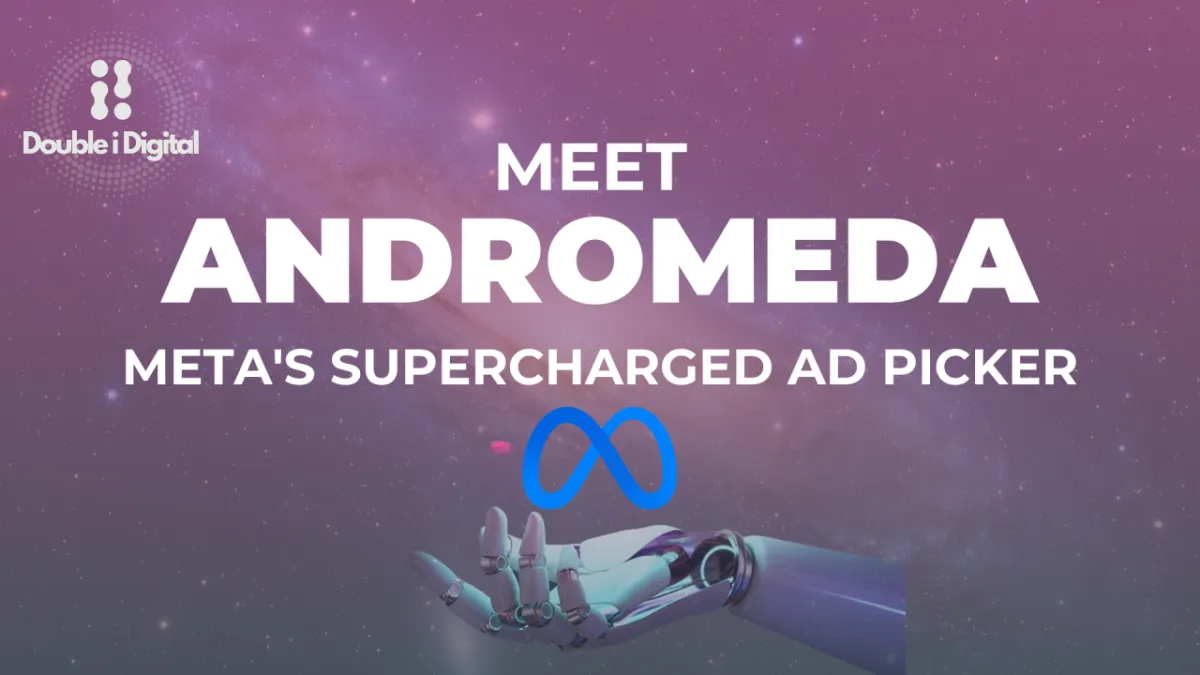
How Andromeda Changes Meta Ads Strategy for Media Buyers
What Meta’s Andromeda Update Means for Media Buyers
If you’ve noticed your Meta campaigns behaving differently lately — especially how budgets shift between ads — you’re not imagining it. Meta quietly rolled out an AI engine called Andromeda, and it’s already changing how media buyers should think about campaign structure, testing, and creative planning.
This isn’t just a tweak under the hood. Andromeda is a fundamental shift in how budget decisions are made. And if you’re still treating your campaigns like it’s 2023, it’s time to adjust.
So, What Exactly Is Andromeda?
Andromeda is Meta’s latest AI-driven system that determines how your ad budget gets distributed within campaigns and ad sets. The difference? It reacts to performance signals much faster than before.
It’s designed to chase results — quickly. That means when you launch five creatives, Andromeda won’t wait for even distribution. If one shows early promise, the budget gets funneled to that ad, fast. The others? They might barely spend at all.
Meta hasn’t made a big deal out of this rollout, but if you’re running performance campaigns, the effects are already loud and clear.
Why Your Testing Framework Needs to Change
Before Andromeda, you could give multiple ads a fair shot with the budget evenly spread across them. Now? You’re lucky if 2 out of 6 creatives even exit the learning phase.
Here’s what this means in practice:
Only launch quality. Every creative in your test needs to be a potential winner. There’s no more “let’s throw a few in and see.”
Keep tests tight. Fewer variables per test means less confusion in the data — and more accurate feedback from Meta’s system.
Expect shorter testing cycles. With Andromeda optimizing in near real-time, results come in fast. You’ll need to monitor campaigns more closely in the first 24–48 hours.
Create test campaigns on the side. If you want fair learning conditions, run isolated test environments outside your BAU campaigns.
The old A/B mindset doesn’t hold up here. This is more like a tournament bracket, and the early winners get 90% of the stage time.
How to Structure Creative Now That AI Is in Charge
Since Andromeda decides which creative gets your budget, your job is to build structures that let it learn usefully. The more chaotic your setup, the worse your outcomes.
Here’s what we’re seeing work right now:
Group Ads by Strategy, Not by Look
Bundle ads by their angle or intent. For example, don’t lump together a price-focused ad with a lifestyle UGC and a founder story. You’ll confuse the algorithm — and your test results will be noisy.
Avoid Overcrowding Ad Sets
Limit the number of ads per ad set. The more you throw in, the more likely your best ones get buried. Three solid concepts perform better than six random bets.
Build With Modularity in Mind
Instead of building ten fully unique ads, build components. A few hooks. A couple of CTAs. Then rotate combinations. Meta still gets variation, but it’s structured in a way that gives you clean learnings.
Don’t Test and Scale in the Same Campaign
This is a big one. If you test inside your scaling campaign, Andromeda will protect performance by starving your new creatives. Isolate your tests, find the winners, then move them into your scaling setups.
You’re Not Losing Control — You’re Shifting It
For a lot of media buyers, this shift feels uncomfortable. We’re used to having more control. With Andromeda, the system is calling more of the shots, and faster than most of us are used to.
But this doesn’t mean you’re powerless. It just means the role is changing.
You’re not just launching campaigns anymore. You’re designing experiments. You’re engineering learning environments. You’re building systems that teach the AI what good looks like.
That’s where the new control lies.
Final Thoughts
Andromeda rewards media buyers who think like systems architects. The better your structure, the smarter the algorithm behaves. If you’re still using outdated testing protocols or launching messy creative bundles, Meta’s AI will work against you, not for you.
It’s a mindset shift: less about micromanaging spend, more about engineering a smart sandbox for learning.
Takeaway:
The future of media buying isn’t about pressing more buttons. It’s about feeding smarter inputs into better systems — and letting the machines do what they’re built for.
